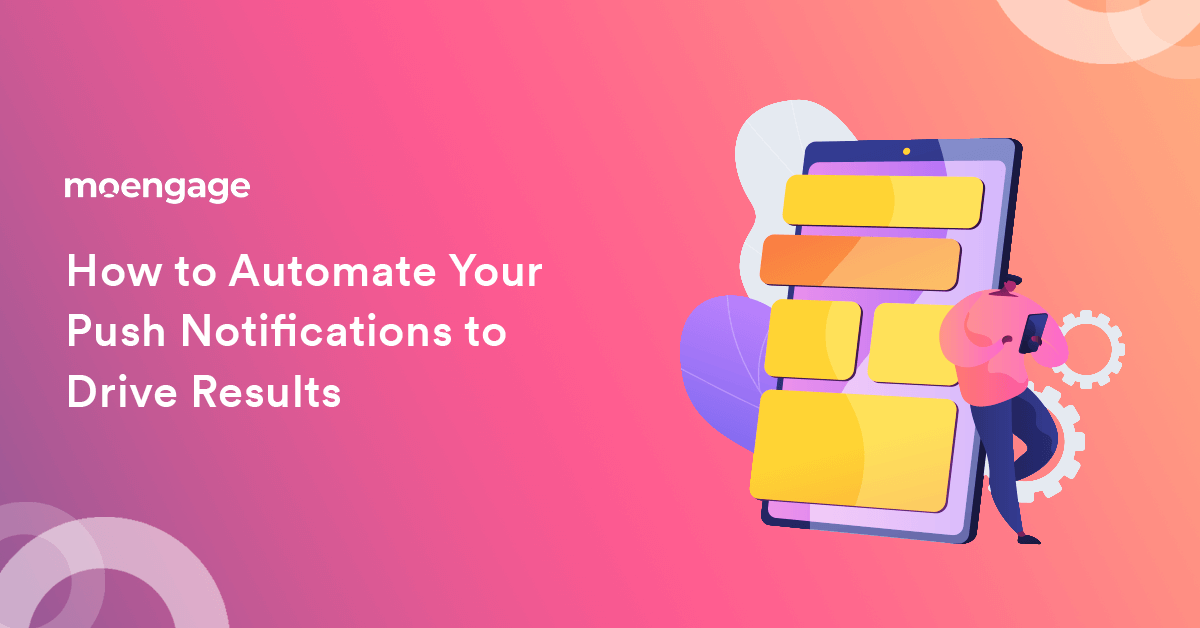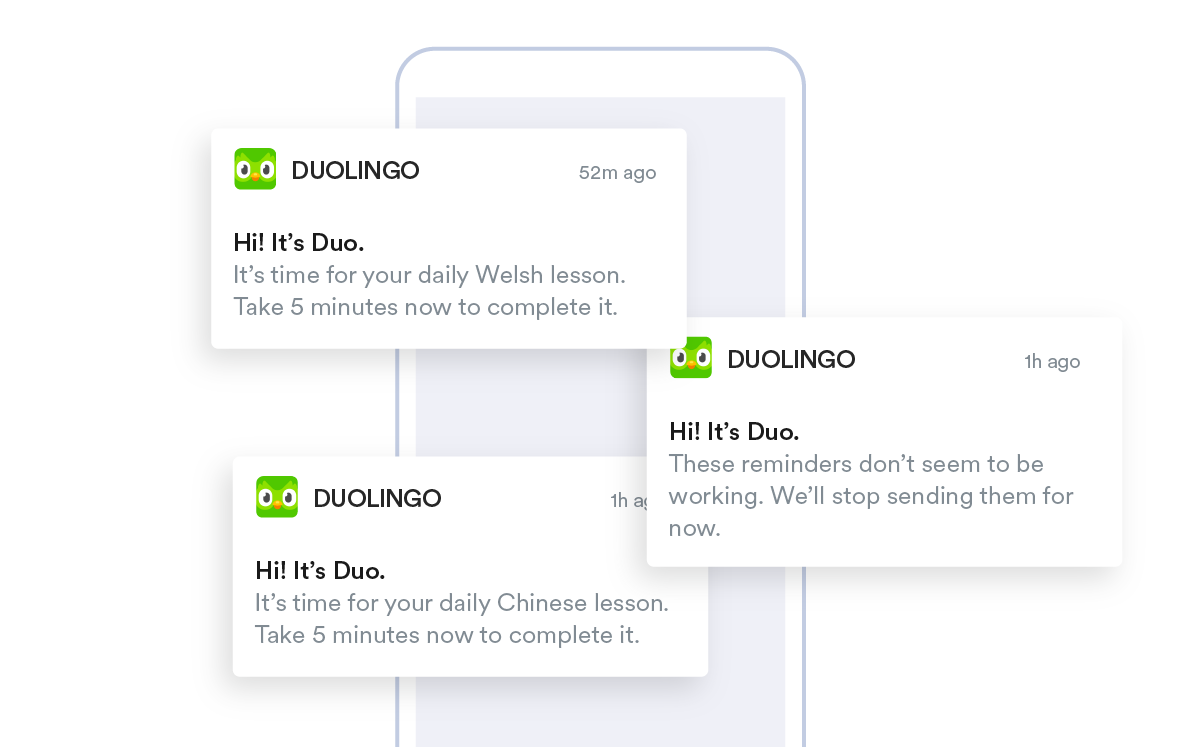How to Automate Your Push Notifications to Drive Results

Getting your customers to download your mobile apps is only half the battle won. The remaining half is maintaining engagement levels so that customers often interact with your business or its products and services.
Fortunately, tools like push notifications can be quite useful in establishing such channels of communication with app users. In fact, they can be an integral part of your omnichannel marketing strategy as they are highly versatile, and you can mold them in multiple ways to achieve results. From promoting products to updating the buyer on their order status – push notifications feature everywhere. However, the fruition of your content marketing efforts all boils down to timing. Here’s where automation comes into play.
Push notification automation could be the key that connects you to your audiences. Let’s review the many ways in which you can leverage it to your advantage.
Benefits of Automating Push Notifications
Here is a quick lowdown on the advantages of automating push notification campaigns:
- Push notification automation saves time and frees up resources so that you can focus on your core competencies.
- It applies user segmentation to market the right kind of content to the target audience at optimum times, making outreach more effective and efficient.
|
|
- Businesses can maintain user engagement through strategic drip campaigns and improve their click-through rates (CTR).
- Push notification automation ensures that your brand name makes a periodic appearance on your audience’s screen and, as such, can increase brand awareness.
- Organizations can perfectly time the automated notification delivery without having to set aside resources for it.
- It simplifies the customer journey and enhances user experience by sharing useful, actionable, insightful, or valuable material.
Push Notification Automation Use Cases
When it comes to push notification automation, you can achieve it through two primary ways – triggered notifications or scheduled notifications. The former sets off automatically in response to a defined trigger. On the other hand, the latter is more like a routine activity that is scheduled to take place automatically after a given period.
Here are a few working examples of both types of push notification automation that you can put to use:
1. Introductory Notifications
The average open rate of welcome emails is 82%. Needless to say, it is one of the most reliable email marketing strategies. So why not extend the same through push notifications?
|
|
Automated welcome notifications can be a great way to introduce your brand and nudge the customer towards exploring your catalog or making their first purchase. Automation ensures that every new subscriber, app user, or mobile user who interacts with the mobile app receives a message guiding them towards the next course of action.
|
|
For some businesses, a one-off welcome message may not leave behind the desired impact. In such cases, you would resort to welcome drip campaigns, which release a string of notifications at a set cadence. After acquiring consent from the mobile app user, your mobile app marketing team can then curate a series of notifications that play out after a defined period to help them through the funnel.
2. Cart Abandonment Notifications
Cart abandonment is a serious problem in the eCommerce sector. This issue gets compounded even more in the case of mobile devices, where the abandonment rate is as high as 85.65%!
Fortunately, push notification automation tools can play a critical role in tracking and targeting abandoned carts. These seemingly minor yet impactful triggered notifications could address the problem and improve your revenue by many folds.
eCommerce stores can set up automated push notifications to re-engage users and to incentivize purchases through the medium of promos, discounts, free shipping, etc. If you already have email marketing campaigns, you can augment them with automated web push notifications to amplify their effect.
|
|
3. Transactional Notifications
While most push notifications are general in nature, transactional messages are triggered notifications that are more user-specific. Such notifications are based on user-specific actions or events, such as account recovery request submission, payment confirmation, order confirmation, change in order status, delivery attempt, level-up or milestones, etc.
 |
Mobile marketing automation platforms typically offer scope for personalizing transactional push messages. Hence, it should come as no surprise that these transactional push notifications enjoy a marginal higher CTR of 30% against the average of 15%.
 |
4. RSS Feed Campaigns
At one point, an RSS feed was the best way to stay updated on any website. Subscribers to the RSS feed would receive alerts or notifications when new content would get published. However, it suffered from infirmities of lack of personalization and timing issues. Fortunately, push notifications can breathe new life into RSS feed campaigns by addressing these setbacks as app marketers can now plug the two to make your content readily accessible.
 |
5. Automated Re-Engagement Notifications
Re-engagement notifications can be triggered campaigns or simple automated campaigns depending on the target audience.
 |
For instance, you wish to appeal to audience segments that have not used your app for a while. You can re-target them by saying that you have missed them and share your latest content. Then, based on the user response, you can update the user segmentation so that the automated marketing platform can then share relevant push messages, i.e., either pursuing their lack of use or engaging them further based on their interests.
6. User Behavior-Based Automated Campaigns
Automated re-engagement notifications are a form of user behavior-based campaigns. However, that is not the only kind as we also have:
- Notification Clicked Campaigns: for when the receiver clicks on your notification.
- Pages Visited Campaign: for engaging a visitor who is present on a certain page.
 |
- Location-based Notifications: for attracting users to physical stores through geofencing.
 |
- Time Zone-based Notifications: for managing push notification publication as per local time zones.

|
These are generally triggered notifications that aid you in guiding the customer through your marketing and sales funnel.
7. Recurring Notifications
Periodic mobile messaging that strictly depends on time falls under the category of recurring push notifications. You can choose how frequently you wish to send such notifications, be it daily, weekly, or monthly. Plus, you get to pick your audience segments for greater relevance.
 |
For example, say you publish a new article on your blog every week. You can easily create a campaign that sends web push notifications to those who frequently visit your blog section. Similarly, you can send an overview of your catalog every month to those who are interested in your products.
Final Thoughts
Push notification automation could very well be the silver bullet to seamless mobile app marketing. Apart from saving time and securing improved results, it will build on the customer experience and offer them upfront value.
Hopefully, the list shared above inspires you to automate push notifications for various campaigns. Given that push notification automation is brimming with potential, its success lies in how you put it to use!









